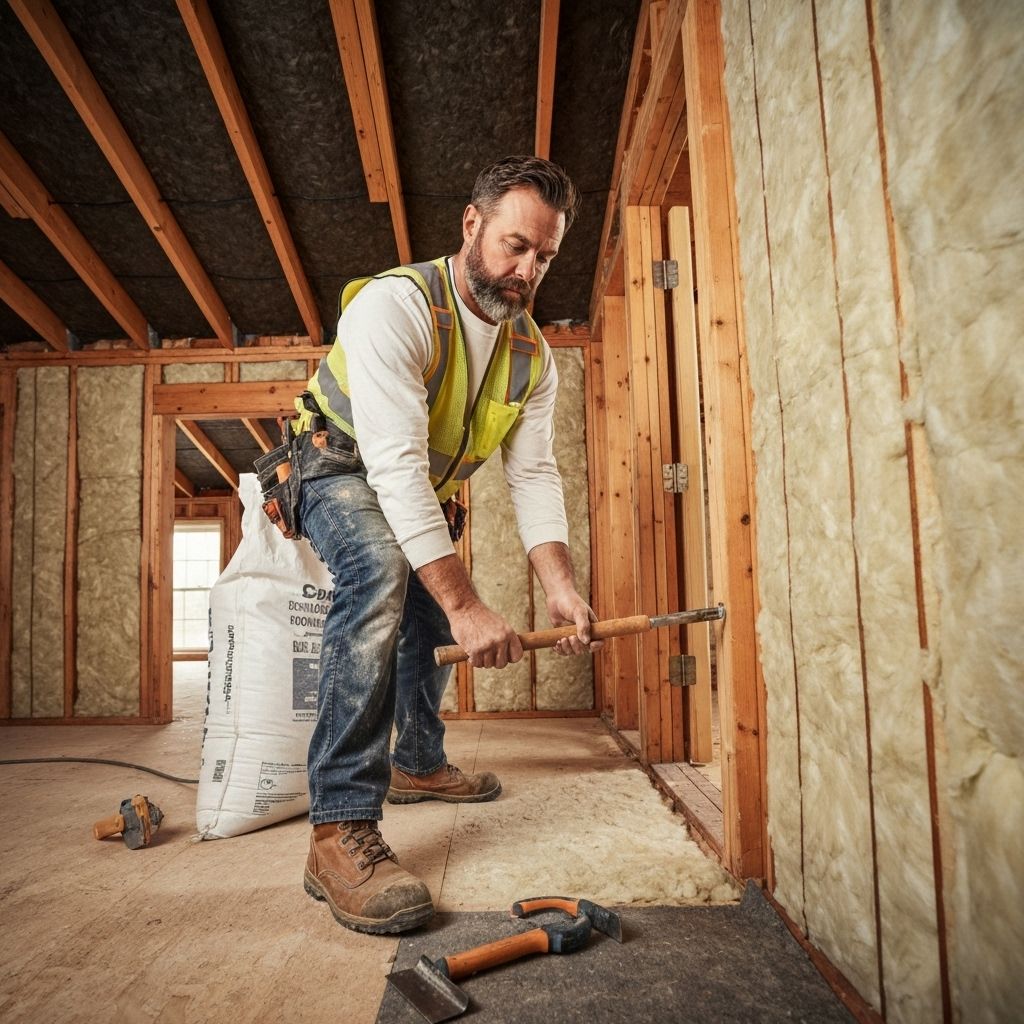In a time when eco-friendliness is a priority in our thoughts, opting for green options for our homes is increasingly crucial than ever . A most impactful ways to achieve an eco-friendly home is through effective thermal protection. Not only will it enhance comfort levels throughout the year , but insulation plays a vital role at reducing energy use as well as lowering greenhouse gas emissions. Whether you're tackling constructing a new home or enhancing your current residence, knowing the different types of insulation out there will assist you in make smart choices beneficial for your finances as well as the environment .
In this comprehensive guide on insulating your home, we will cover multiple sustainable insulation choices , discuss how to evaluate your insulation requirements, and emphasize the unexpected advantages that come with good insulation. From learning about R-values and choosing between batt and blown-in insulation , we will equip you with the knowledge you need to make the right choices for your living space . So , when you are prepared to stop wasting money and begin your path to an eco-friendly home, let's dive into the realm of eco-friendly insulation .
Understanding Insulation Types
When it comes to home insulation, understanding the diverse types on the market is crucial for arriving at educated choices that benefit both your ease and the natural surroundings. https://hedge.fachschaft.informatik.uni-kl.de/YRLJ6KS9T9iArvt04649kw/ include fiberglass, cellulose insulation, spray-applied insulation, and stone wool. Each type has individual attributes and associations, making it crucial to choose the suitable one for your particular requirements. Glass fiber is widely used for its cost-effectiveness and performance, while recycled paper, made from upcycled materials, offers a more eco-friendly option with outstanding thermal performance.
Spray-applied insulation is a different popular choice, known for its air-sealing capabilities. It swells on application process, filling voids and fissures that traditional insulation may miss. This form can significantly improve energy-saving and ease in your residence. On the flip side, stone wool, also known as stone fiber, is appreciated for its fireproof characteristics and noise reduction capabilities, making it an outstanding option for areas where noise control is important.
Besides choosing the right type, considering the R-value is important in understanding insulation performance. The insulation rating measures temperature resistance, indicating how well the insulation can withstand transfer of heat. Increased R-values mean better insulation efficacy. When selecting insulation materials, it’s crucial to factor in not only their heat performance but also their ecological footprint, cost, and fit for your specific home design. By weighing these elements, you can develop a eco-friendly choice for a sustainable home.
Insulation Installation Tips
When installing insulation, the initial step is to meticulously take measurements of the areas you plan to insulate. Precise measurements guarantee that you purchase the correct amount of insulation material, minimizing waste and maximizing effectiveness. Take note of any unusual shapes or sizes that may require special cutting or fitting. If you're unsure about your measurements, consider seeking advice from a professional or using web-based tools that can guide you through the steps.

Before installation, it’s essential to air seal your home to improve the effectiveness of the insulation. This involves identifying and sealing any gaps or leaks around windows, doors, and other spots where air might escape. A well-sealed home prevents drafts and ensures that the insulation can function at its optimal. Use sealant, expanding foam, or weather stripping to seal up these openings, creating a block that improves energy efficiency.
Lastly, when working with insulation, always emphasize safety. Wear appropriate protective gear, such as hand protection, goggles, and masks, especially if you’re using materials like fiberglass insulation, which can irritate your skin and lungs. Additionally, ensure adequate ventilation in your work area to avoid inhaling any dust or fibers that may become airborne. Taking these precautions will make the installation process safer and even more efficient, resulting in a comfortable and and efficient home.
Advantages of Proper Insulation
Proper insulation provides various benefits that contribute to a much enjoyable and eco-friendly home. One of the key gains is temperature regulation. insulation companies helps to maintain a steady indoor climate, holding your home warm in the winter and chilled during the summer. This lowers the dependency on HVAC systems, leading to reduced energy bills and a more sustainable living environment.
In addition to cost reductions, proper insulation can significantly improve indoor air quality. Properly insulated homes are more effective at keeping out outdoor toxins, irritants, and humidity from invading, which can help create a better living space for you and your family. Furthermore, insulation decreases noise transfer between rooms, enabling increased privacy and a quieter home atmosphere.
Beyond comfort and wellness, putting money into adequate insulation can enhance the overall value of your property. Homes with good insulation are often more desirable to buyers, as they offer lower operating costs and a greater sense of comfort. Thus, improving your insulation not only enhances your present living conditions but can also be a wise financial decision in the years to come.
